Small Home Gazette, Winter 2020
Preservation Alliance of Minnesota Becomes Rethos
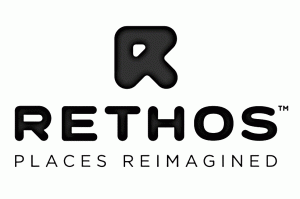 Rethos? We were a bit perplexed. Was it still a historic preservation group? What does Rethos mean? Is Rethos the bad guy from the latest superheroes movie?
Rethos? We were a bit perplexed. Was it still a historic preservation group? What does Rethos mean? Is Rethos the bad guy from the latest superheroes movie?
We found some answers on a helpful page of the organization’s website titled “Why Now, Why Rethos?”. We also looked up the definition of “ethos,” the core of the new name. Ethos, it turns out, is a Greek word meaning “character” that is used to describe the beliefs or ideals used to guide a community.
To get even further clarity, we posed a few questions to Rethos’ executive director, Doug Gasek. Below is a transcript of that conversation, edited for clarity and brevity.
Small Home Gazette: First things first: Was the new name necessary because the purpose of the organization has changed? Or did you change its name to more accurately reflect what the organization was already doing?
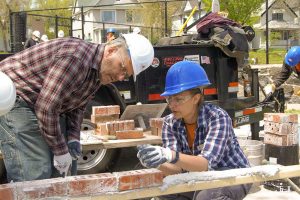
Rethos Executive Director Doug Gasek, left.
Doug Gasek: The second option is definitely it. We’ve been around for 35 years, and the organization has changed and evolved. So the name was more like catching up to the work that we’re doing now. We’re not charting a new direction.
Gazette: How did the Preservation Alliance of Minnesota evolve from the time it was formed?
Gasek: The organization was formed in 1981 around a grassroots, single-site project in Red Wing, Minnesota, which was to try to save some Irish row houses. The row houses were demolished, but out of that experience, this great organization was born.
For a long time, we were focused on single-site advocacy work. We still are to a degree, but through time, we added programs and added staff. We started doing field services, trying to get out to greater Minnesota to assist people who had challenges around historic places. That work evolved to where it wasn’t necessarily site-specific, but was more about ethics and ethos—a more generalized approach to preservation and building reuse, community-wide. At the same time, we were focusing our policy efforts on historic tax credits at the state level.
Gazette: So, Rethos is still about preserving historic places, but it’s broader than just, “Don’t tear this building down.”
Gasek: It’s not just about preserving and reusing National Register-eligible places but reusing and reintegrating all older buildings into communities. We say, let’s try to figure out how to reuse as many older places as possible.
Gazette: That’s in line with what the Bungalow Club is about. Our bungalows don’t have individual historic designation; they aren’t where famous people once lived. Consequently, in discussions of historic preservation, the everyday fabric of our cities and towns get overlooked in favor of saving the grand buildings, the architecturally significant buildings. We think saving those buildings is good, but we’re also in favor of saving older, smaller homes because of their characteristic details and high quality construction. Reuse is “green,” after all.
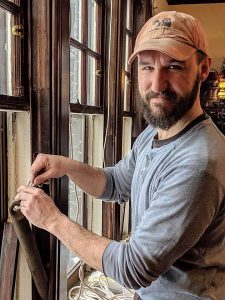
Window restorer Joe Hayes recently led a Rethos workshop on window repair and restoration in Duluth.
Gasek: I think the environmental element has always been a tough fit for traditional preservation. When you’re just talking about preserving large, significant, historic buildings and not about using and reusing all the buildings in our community, the green argument gets lessened. We have to talk about saving and reusing everything. That’s how you prevent unnecessary construction waste.
Gazette: For us, it isn’t about turning each bungalow into a frozen-in-time museum. It’s about saving what is valuable and what works about them, and gently and respectfully adapting them to modern life. But back to Rethos. Is there one sentence that sums up what Rethos is?
Gasek: “Why Rethos?” is one of the questions we often get. Through our evolution we figured out where we fit is in that “ethos” word, that spirit of community. And our unique spin on it is the “Re” piece—reusing, reimagining, recycling, restoring, remembering and so on. That’s our unique spin on what ethos is in communities.
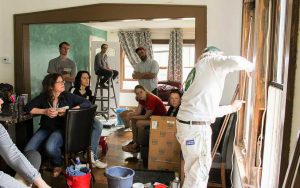 Gazette: In looking at your website, we still see much that’s recognizable from before the name change. For example, workshops on window repair, winterization, etc. So none of that has gone away?
Gazette: In looking at your website, we still see much that’s recognizable from before the name change. For example, workshops on window repair, winterization, etc. So none of that has gone away?
Gasek: Correct, especially with our classes. And we’re trying to get our classes in even more places throughout greater Minnesota. Last year we put on more than 60 classes, and we’re working to expand them in specific areas of the state. We have two contract positions that are starting up in the St. Cloud-Little Falls area and another in Superior-Duluth, to try to take those classes to as many places as possible.
Gazette: On your website, under the “What We Do” section, there are four categories: Education, Rural Programs, Public Policy, and Investment Partnerships. Can you explain those?
Gasek: Education is all about giving people the confidence and expertise to tackle projects in their own homes. We also do Old Home Certified, which is a Realtor certification program. Those are the two big areas in Education.
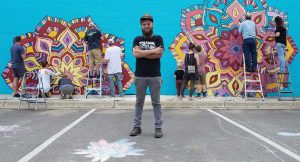 When it comes to rural programming, we’re being highly intentional about taking what we do throughout Minnesota. We have three main tools in our toolbox here. The first is running the Main Street Minnesota Program for economic development in downtowns. We also do Artists on Main Street. This past year we funded nearly 70 small-scale arts projects in seven downtown communities.
When it comes to rural programming, we’re being highly intentional about taking what we do throughout Minnesota. We have three main tools in our toolbox here. The first is running the Main Street Minnesota Program for economic development in downtowns. We also do Artists on Main Street. This past year we funded nearly 70 small-scale arts projects in seven downtown communities.
We also do community engagement work. We’ve been working with New Ulm, and we’re launching a project in Otter Tail County to help people tell stories that can be geographically represented on a map. Place-based storytelling. So again, it’s not about National Historic Register places, it’s about what people know, what people care about in the communities where they live and work.
Regarding public policy, we’re really focused on our work at the state capitol. That is, making sure that the historic tax credits remain in place; making sure that the bonding bills go toward some historic places; and in general, making sure the right tools are out there for building reuse.
Finally, our Investment Partnership work is focused on state tax credit investment throughout Minnesota, Wisconsin and Iowa. That is, helping people better leverage the state historic tax credits available in those states.
Gazette: Final thoughts?
Gasek: I think people see Rethos and think, “What is that?” But when they get to the “Why Rethos?” piece, it really resonates with people. We’re really proud of the direction we’ve taken—to have a name that catches up to the work we do.
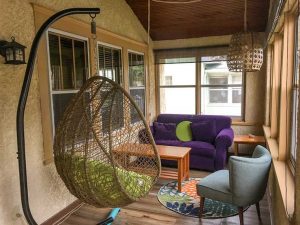 Need a little inspiration? Read this post by a woman who applied practical training offered by Rethos to rehab the porch windows of her American Foursquare home: www.rethos.org/post/stepbystep.
Need a little inspiration? Read this post by a woman who applied practical training offered by Rethos to rehab the porch windows of her American Foursquare home: www.rethos.org/post/stepbystep.











